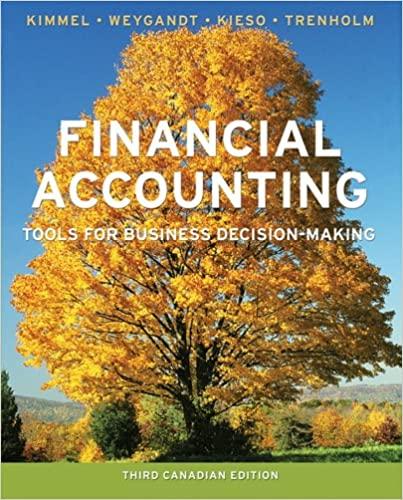Answered step by step
Verified Expert Solution
Question
1 Approved Answer
Show all the formulas please and thank yall PART A PART B Residual income and Investment Decisions Allard, Inc., presented two years of data for
Show all the formulas please and thank yall



Residual income and Investment Decisions Allard, Inc., presented two years of data for its Frozen Foods Division and its Canned Foods Division. Frozen Foods Division: Year 1 Year 2 Sales $35,300,000 $37,700,000 Operating income 1,440,000 1,580,000 Average operating assets 5,690,000 5,690,000 Canned Division: Year 1 Year 2 $12,900,000 Sales $11,700,000 Operating income 630,000 570,000 Average operating assets 5,950,000 5,950,000 At the end of Year 2, the manager of the Canned Division is concerned about the division's performance. As a result, he is considering the opportunity to invest in two independent projects. The first is juice boxes for elementary school children. The second is fruit and veggie pouches for kids on the go. Without the investments, the division expects that Year 2 data will remain unchanged. The expected operating incomes and the outlay required for each investment are as follows: Juice Box Fruit Pouch Operating income $28,000 $15,000 Outlay 160,000 110,000 Allard's corporate headquarters has made available up to $520,000 of capital for this division. Any funds not invested by the division will be retained by headquarters and invested to earn the company's minimum required rate of return, 7 percent. Determining Market-Based and Negotiated Transfer Prices Carreker, Inc., has a number of divisions, including the Alamosa Division, producer of surgical blades, and the Tavaris Division, a manufacturer of medical instruments. Alamosa Division produces a 2.5 cm steel blade that can be used by Tavaris Division in the production of scalpels. The market price of the blade is $22. Cost information for the blade is: Variable product cost $ 9.30 Fixed cost 5.20 Total product cost $14.50 Tavaris needs 17,000 units of the 2.5 cm blade per year. Alamosa Division is at full capacity (87,000 units of the blade). Required: 1. If Carreker, Inc., has a transfer pricing policy that requires transfer at market price, what would the transfer price be? per unit Do you suppose that Alamosa and Tavaris divisions would choose to transfer at that price? 2. Now suppose that Carreker, Inc., allows negotiated transfer pricing and that Alamosa Division can avoid $1.65 of selling and distribution expense by selling to Tavaris Division. Which division sets the minimum transfer price, and what is it? Round your answers to the nearest cent, if needed. per unit Which division sets the maximum transfer price, and what is it? per unit Do you suppose that Alamosa and Tavaris divisions would choose to transfer somewhere in the bargaining range? 3. What if Alamosa Division plans to produce and sell only 66,000 units of the 2.5 cm blade next year? Which division sets the minimum transfer price, and what is it? Round your answers to the nearest cent, if needed. per unit Which division sets the maximum transfer price, and what is it? per unit Do you suppose that Alamosa and Tavaris divisions would choose to transfer somewhere in the bargaining range? ABC and CVP Analysis: Multiple Products Good Scent, Inc., produces two colognes: Rose and Violet. Of the two, Rose is more popular. Data concerning the two products follow: Rose Violet 56,000 11,200 Expected sales in cases) Selling price per case Direct labor hours $102 $83 33,850 5,900 Machine hours 10,400 2,850 Receiving orders 50 23 Packing orders 99 49 Material cost per case $52 $44 Direct labor cost per case $9 $8 The company uses a conventional costing system and assigns overhead costs to products using direct labor hours. Annual overhead costs follow. They are classified as fixed or variable with respect to direct labor hours. Fixed Variable $178,875 Direct labor benefits $ Machine costs 197,500 218,625 Receiving department 248,500 Packing department 101,000 Total costs $547,000 $397,500 All depreciation Required: 1. Using the conventional approach, compute the number of cases of Rose and the number of cases of Violet that must be sold for the company to break even. In your computations, round variable unit cost to the nearest cent and round the number of break-even packages to the nearest whole number. Break-even cases of Rose cases Break-even cases of Violet cases 2. Using an activity-based approach, compute the number of cases of each product that must be sold for the company to break even. In your computations, round all computed amounts to the nearest cent and round the number of break-even packages to the nearest whole number. Break-even cases of Rose cases Break-even cases of Violet cases PART A


PART B


Step by Step Solution
There are 3 Steps involved in it
Step: 1

Get Instant Access to Expert-Tailored Solutions
See step-by-step solutions with expert insights and AI powered tools for academic success
Step: 2

Step: 3

Ace Your Homework with AI
Get the answers you need in no time with our AI-driven, step-by-step assistance
Get Started


